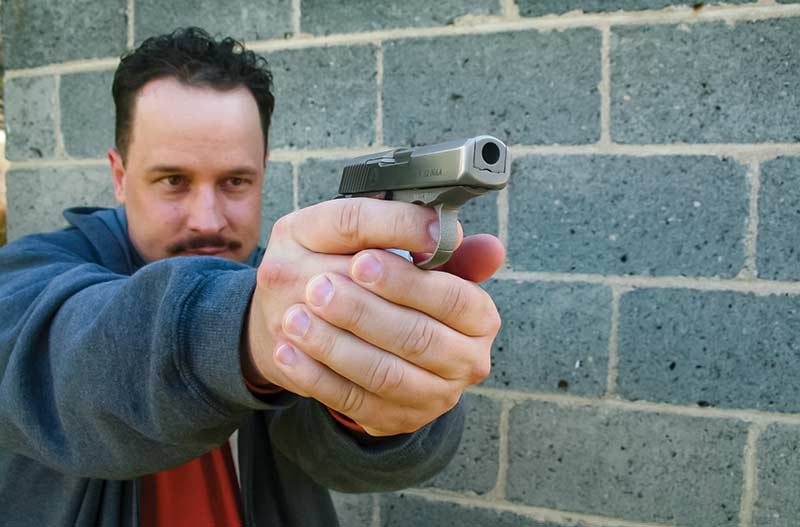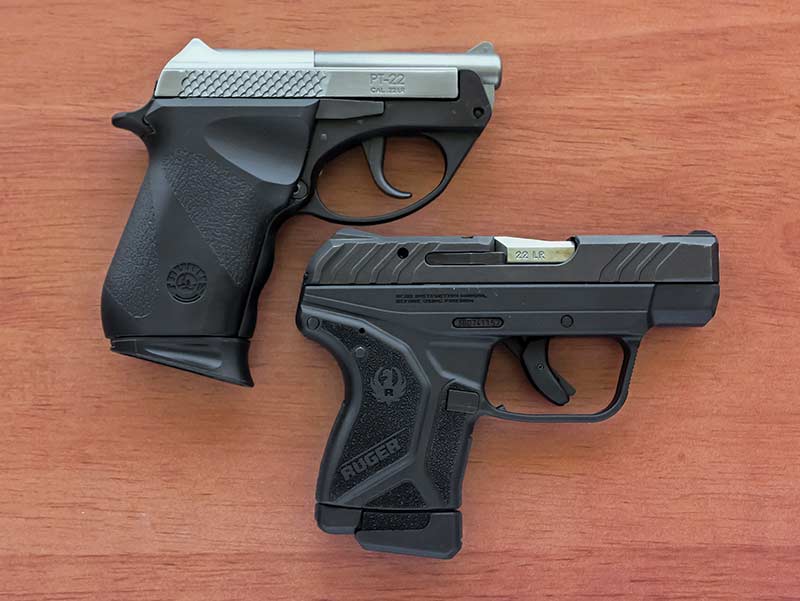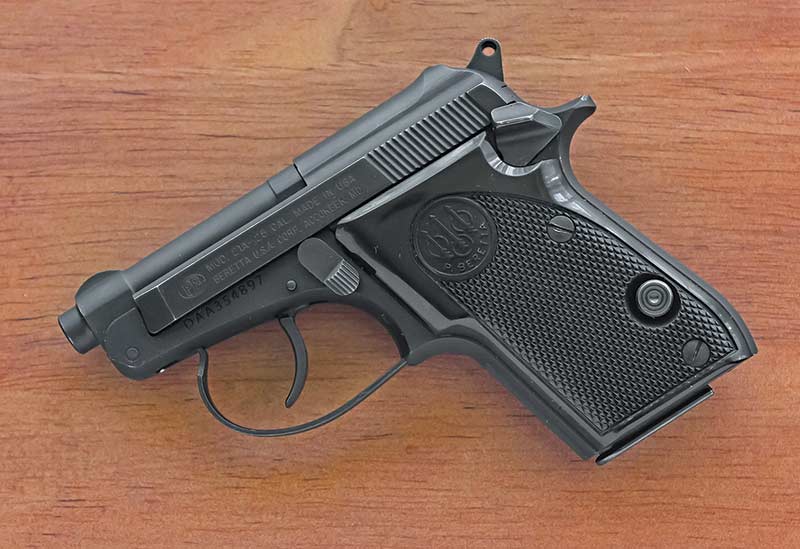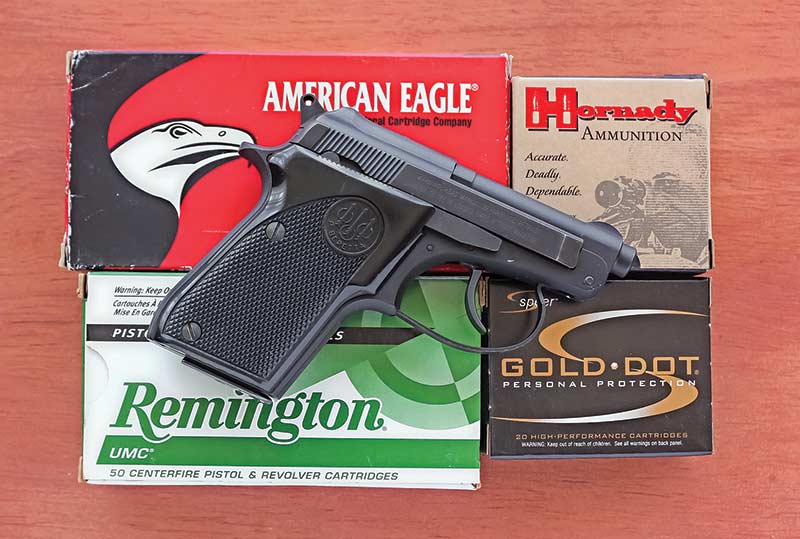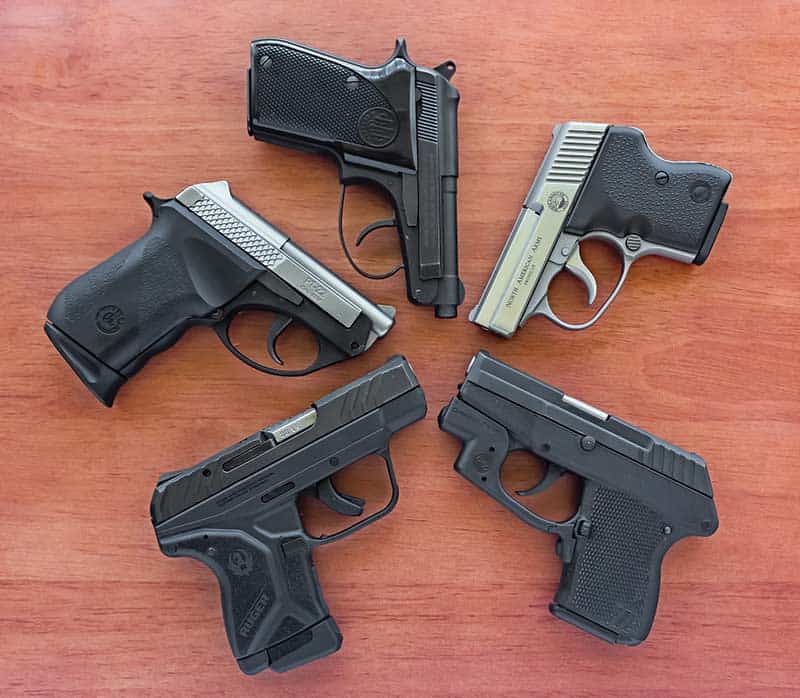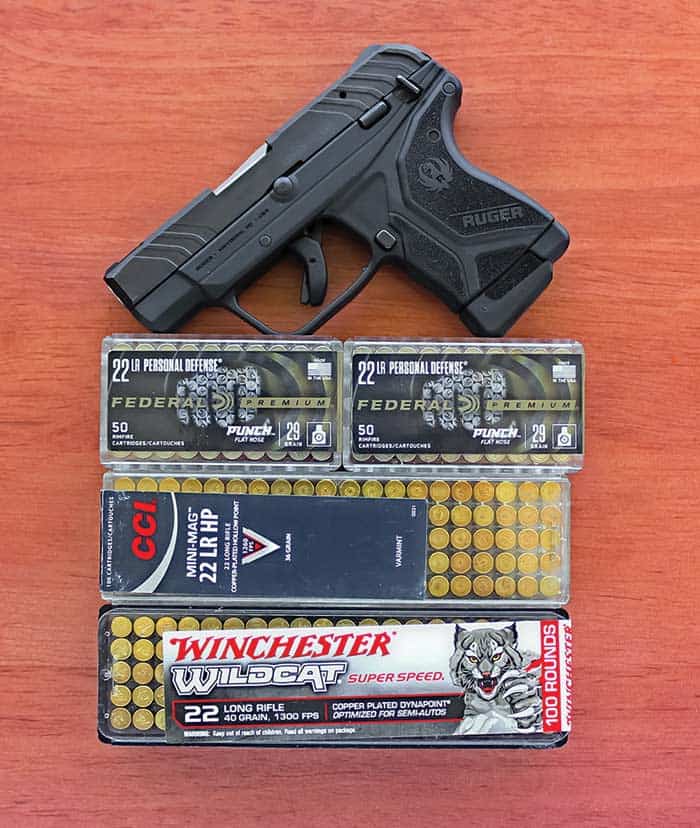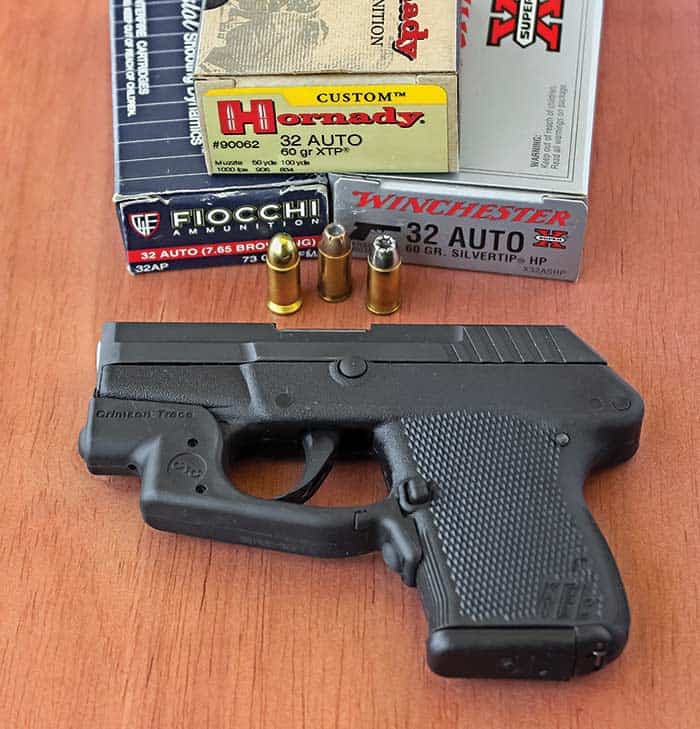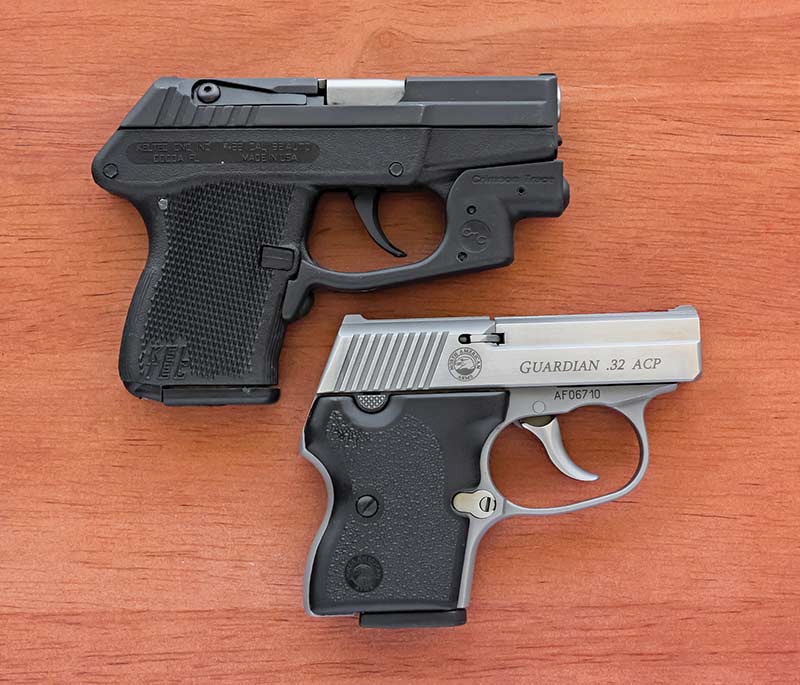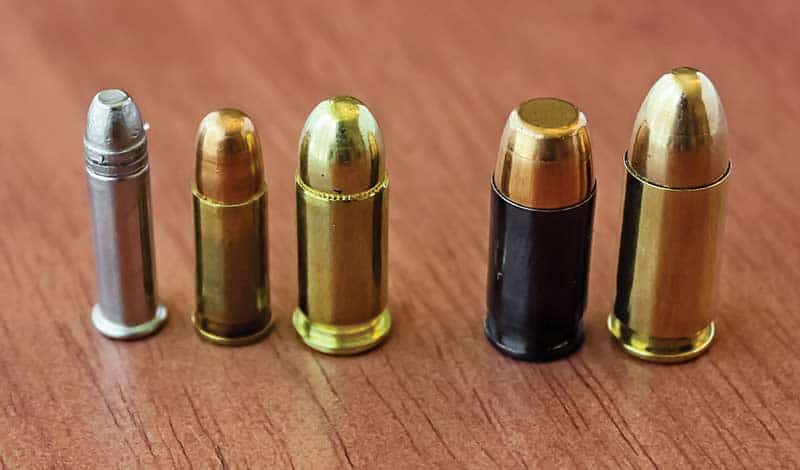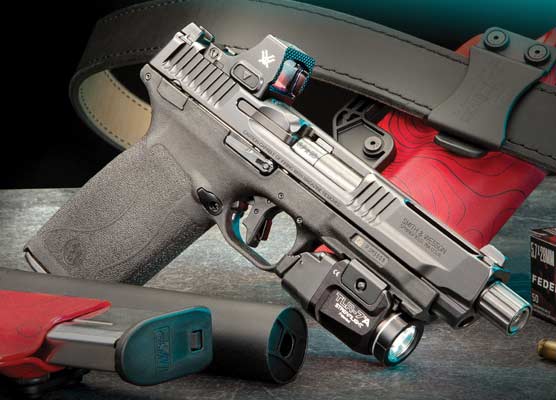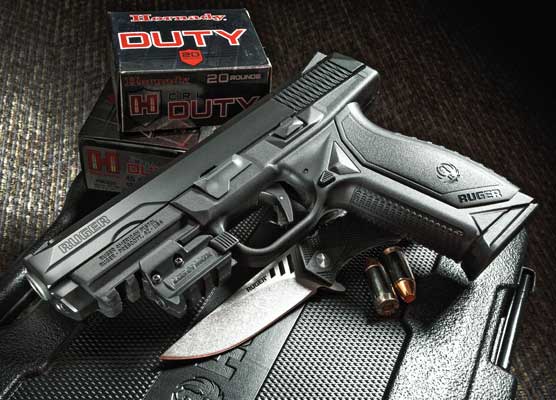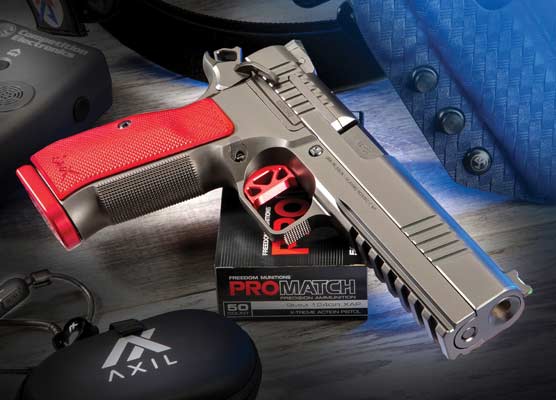Mobilizing Mouse Guns
Small-Caliber Pocket Pistol Self-Defense Tips
When times are tight and situations become unpredictable, folks will turn to the firearms they have at hand for personal protection, regardless of what the conventional wisdom of the day might be. Recent concerns over the change in administration, COVID-19 and civil unrest have driven the demand for factory-fresh .45 ACP, 9mm and .380 ACP pistols to record-setting levels. Because preferred medium- and big-bore semi-automatic pistol options are either selling for a mint or simply unavailable, some folks are dusting off small-caliber pocket pistols that have been referred to as “mouse guns.”
Chambered in .22 LR, .25 ACP or .32 ACP, the critics of these petite pocketables have suggested their levels of defensive performance are better suited to pest control than self-defense, thus the mousy moniker. Many of these sub-caliber guns were displaced by the more potent .380 ACP pocket pistols that started cropping up in the late 2000s and early 2010s. The smaller calibers have fallen even further out of favor over the last few years as single-stack and double-stack micro-compact 9mm pistols continue to grow in popularity.
But seeing as how guns don’t spoil or just get thrown away, many well-made examples of the mouser class are still in circulation today. In fact, several reputable manufacturers are still making them. Whether you carry a mouse gun for its convenience or because it’s the best you can do for now, here are a few things to keep in mind.
The Good, the Bad and the Mousy
The one positive feature of mouse guns rarely ever disputed is how easily they can be carried on a daily basis. No matter how you slice it, mouse guns can be conveniently tucked into just about any purse, pants or pack pocket you prefer. Belted holster carry is quite comfortable and few guns are as well-suited to ankle carry as these semi-automatics.
Let’s take the measure of five mousers currently in production: the Ruger LCP II Lite Rack (.22 LR), Taurus 22 Poly (.22 LR), Beretta Bobcat 21A (.25 ACP), KelTec P32 (.32 ACP) and North American Arms Guardian (.32 ACP). Barrel lengths range from 2.2″ to 2.8″ with overall lengths hovering around 5″. Heights are between 3.5″ to 4″ with slide widths of about 0.80.” Unloaded weights average around 12 oz., with the lightest being the KelTec P32 at 8.5 oz. with a Crimson Trace laser sight and empty magazine installed, and the old-school steel frame Guardian being the heaviest at 13.7 oz. Although some pocket .380s offer similar size and weight profiles, most micro-compact 9mm pistols are noticeably larger and heavier.
Sub-caliber pocket pistols are among the smallest handguns available. But shrinking the overall size of a semi-automatic has its drawbacks. They usually have fixed sights that tend to be small and more challenging to use. Some are so small as to be mostly ornamental. The grips are short with just a two-finger profile leaving the little finger looking for something to do. The narrow grip frames are not always a good fit for larger hands.
Single-stack magazine capacities are usually between 6- to 10-rounds, depending on the caliber. It’s not much ammunition to work with by today’s double-stack capacity standards. In some cases, either as a safety feature or for more reliable ammunition ignition, these guns are outfitted with heavy triggers. The double-action-only trigger of the Taurus 22 Poly is just over 9 lbs., with the Guardian’s trigger coming in at just under 12 lbs. The typical trigger pull for many popular striker-fired pistols is 5.5 lbs., give or take a pound or so. In short, mouse pistols are shootable but require more dedication on the part of their owners to master.
Mouse Gun Performance
Exactly how mousy are mouse guns compared to other popular sub-compacts? Before answering this question, let’s be perfectly clear. Every defensive handgun and ammunition combination on the market today is potentially lethal. This means they should all be handled with the proper respect regardless of their caliber or size.
To get a better sense of performance, I pulled together the range results for various pistols I’ve tested at the shooting range. Working to level the playing field as much as possible, the results are taken from dedicated carry guns with similar barrel lengths and feature sets. Each one was fired from a bench rest at an indoor range with targets set at a distance of 7 yards.
Five 5-shot groups were fired using three different loads of ammunition in differing bullet weights (when available). Bullet velocities were measured at the muzzle for 10 shots of each load using a LabRadar chronograph.
The list includes three mousers with a sub-compact .380 ACP and 9mm pistol rolled in for comparison. All the pistols operated reliably with the ammunition tested and defensive accuracy was similar with 5-shot group averages of 1.75″ to 2″. With these other factors being nearly equal, take a look at the muzzle energy range each gun yielded in the chart below.
Although this is far from an exhaustive set of test results, it’s still informative. It’s no surprise to see the .22 LR and .25 ACP pocket pistols were the least energetic of the bunch. It was a bit surprising the .22 was just a little more potent than the .25 because, statistically, they are neck-and-neck for last place. The rimfire .22 LR pocket pistols have the advantage of an expansive and less expensive selection of ammunition while the .25 ACP is a more reliable centerfire cartridge.
In the movie Dr. No, James Bond is “encouraged” by his boss to trade in his preferred .25 ACP Beretta M1934, which jammed on him in a pinch, in favor of a Walther PP chambered in .32 ACP (7.65 mm). The Walther is described as having, “… a delivery like a brick through a plate-glass window.” By today’s standards, the .32 ACP is not exactly a powerhouse. But compared to a similarly sized .22- or a .25-caliber pistol, it’s definitely a step up in performance.
At one point in time, the .380 ACP was considered a mouse caliber as well. But it’s clearly in a performance class above the mouse calibers. Pistols firing .380 ACP cartridges loaded with +P powder charges, or deep penetration-type bullets, come close to performing like their larger 9mm pistol counter parts. The performance numbers for the now ubiquitous 9mm cartridge, along with small guns accepting 11- or 13-round double-stack magazines, make a compelling case for trading a pocket gun for a slightly larger micro-compact pistol.
Proper Care and Feeding
Mouse guns are notorious for being unreliable jam-o-matics. In part, this reputation is garnered from the junk guns that used to plague the market, including the “Ring of Fire” pistols that came out of California before most of the companies went out of business. Small semi-autos made by Phoenix, Raven, Bryco, Lorcin and Jennings, along with a variety of low-grade imports, are poorly made from cheap materials. They should be avoided for use as defensive handguns. Well-made pistols, like the models mentioned earlier, can be utterly reliable when they are kept clean, properly lubricated and loaded with the right ammunition.
The only .22 LR cartridge specifically designed for short-barrel .22 LR handguns I’m currently aware of is Federal Premium’s Personal Defense load topped with the company’s 29-grain flat-nosed Punch bullet. Released in 2021, it’s a subsonic load (1,070 fps) that looks to be designed for use with sound suppressors. I’m looking forward to giving it a try.
Other than this one handgun-specific round, premium-grade high-velocity ammunition (1,200 to 1,300 fps) is usually the best bet to keep a mouse gun running reliably. Bulk-box practice loads and premium Subsonic or standard-velocity loads may not generate enough energy to cycle the slide reliably. The lower-energy levels can cause inconvenient stovepipes and failures to feed. Hyper velocity works well too, but usually costs more than high-velocity loads.
The bullet speed of high-velocity .22 LR loads can drop as much as 300 to 400 fps when fired from a pistol instead of a rifle. This means hollowpoints do not expand reliably and will likely penetrate to similar depths as round nose bullets. Stick to the quality loads, round-nose or hollowpoint, that operate consistently in your particular pistol.
The standard load made by most manufacturers for .25 ACP pistols is topped with a 50-grain full-metal jacket round-nose bullet with a muzzle velocity of around 760 fps. Hornady and Speer do offer premium hollowpoint loads. But much like .22 LR pistols, there’s just not enough get-up-and-go with .25 ACP to guarantee reliable bullet expansion. Some .25 ACPs will not cycle reliably with hollowpoints because their feed ramps are shaped for round-nose bullets. Because of the uniformity of ammunition available for these guns, it’s more likely any feeding issues that crop up are due to mechanical issues with the pistol itself (dirty, weak magazine spring) than
ammunition compatibility.
Top-notch defense-grade .32 ACP ammunition topped with modern hollowpoint bullets is available from Winchester, Speer and Federal Premium Ammunition, if you can find it. Bullet expansion is better with these loads but not always 100%. Some folks prefer the deeper penetration potential of a full-metal jacket bullet or the gun in question may only run reliably with round-nose bullets. If so, Fiocchi’s 73-grain #32AP load is one of the more potent round-nose options that has proven to be reliable in the guns I’ve tested.
Remember there’s nothing inherently “bad” or “wrong” with choosing to carry a reliable defensive handgun in a smaller caliber, especially if it’s what you’ve got for now. Someone who is armed with a petite pistol has options in a defensive situation someone who is unarmed does not. However, if you do choose to pack a mouse gun, do so with realistic expectations of its accuracy and performance potential so you can adjust your self-defense plan accordingly.
For more info:
Ruger.com
BerettaUSA.com
NorthAmericanArms.com
TaurusUSA.com
KelTecWeapons.com

Get More Carry Options content!
Sign up for the newsletter here:
